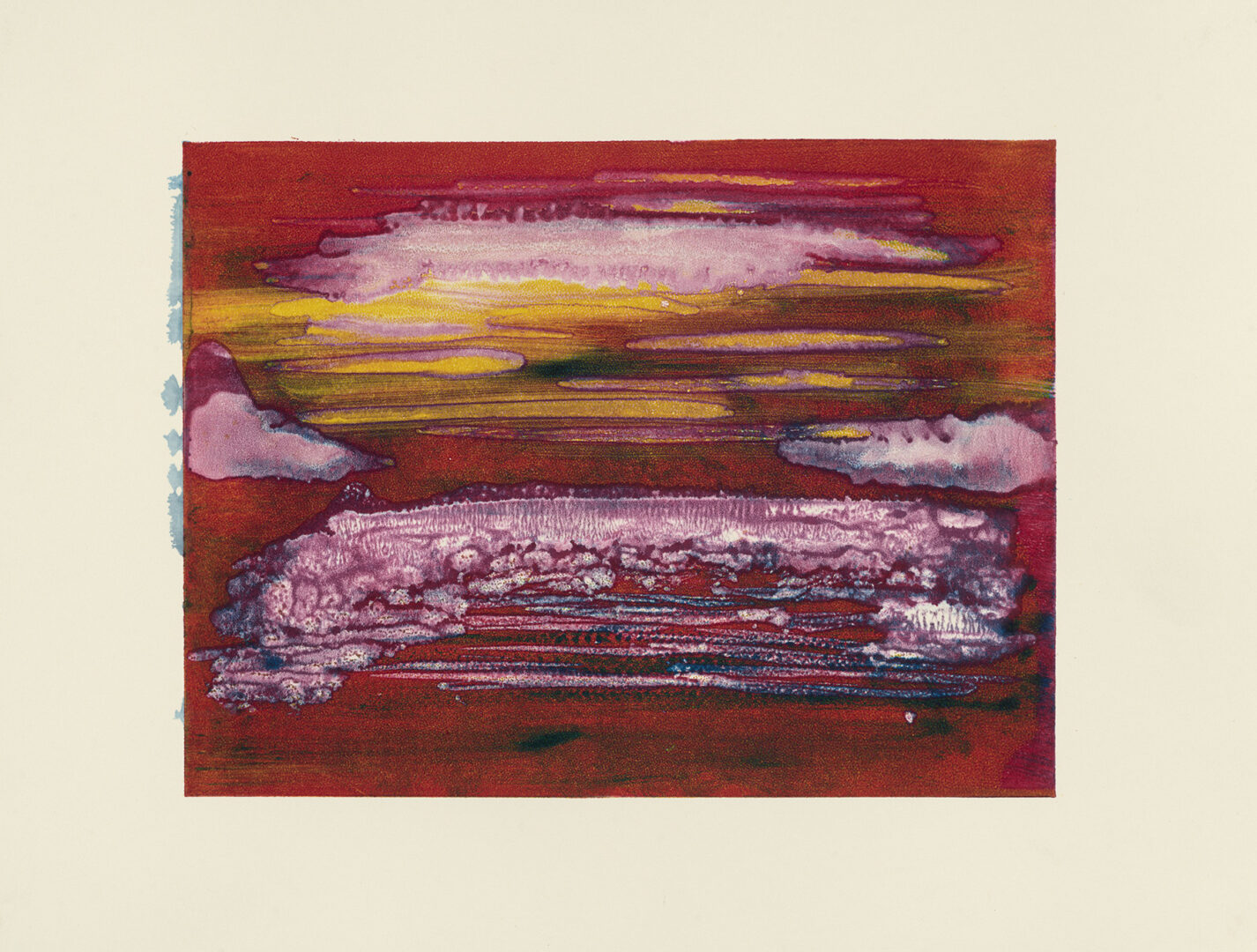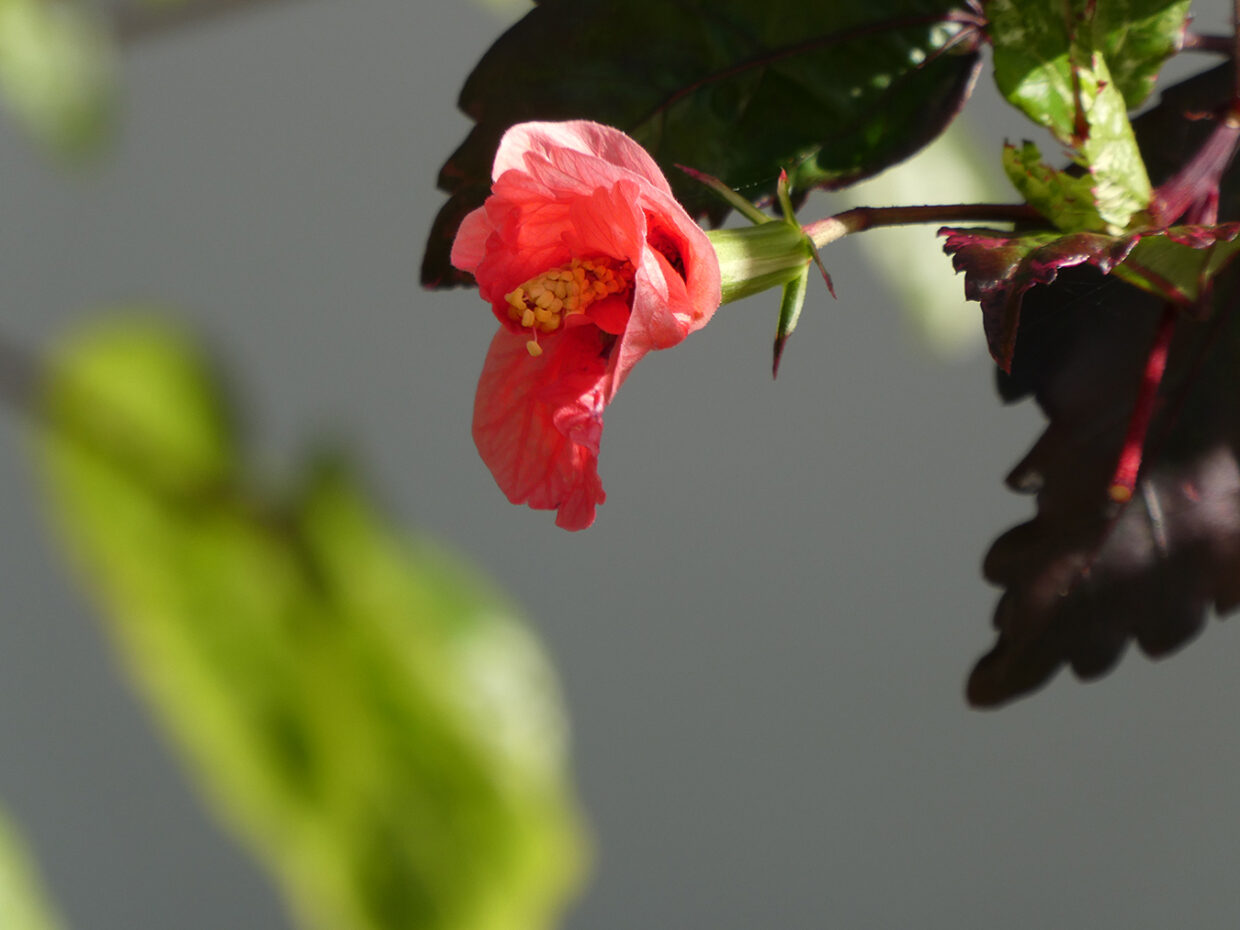I’ve been thinking about landscape for a long time. I also have been thinking about (and writing) fiction for a long time. Recently, in my sketchbook-journal, I wrote: “reverie + phenomenon = fiction”.
Here’s the most recent artist statement I’ve written:
The ongoing body of work I have been investigating since Spring 2022 is a series of oil and graphite works-on-paper called “Reflecting Pool”; the title references not only literal bodies of water, but a metaphorical gaze into the self which has the potential to reveal circumstances around us. What I am attempting to do with this series, through the record of memory and sensorial reflection, is to distill and promote the felt experience of living in the natural landscape we have now, before we lose what we know to global heating.
“Reflecting Pool” emerged out of my monotype practice. Those works reflected and imagined various futures of ‘place’—that ‘place’ was both fantastical and mournful. The monotypes themselves were painterly, using both water-soluble techniques and oil-based methods.
It is a series driven by mortality, loss, and change—one which centers the emotional experience instead of a literal show-and-tell. The goal is to capture the beauty, majesty, terror, and grief which experiences in nature can provoke in the experiencer; as well as the urgency of ‘now’ in the face of future uncertainty.
Central to the generation of my artwork is the idea that visual art can function as ‘fiction’ as much as literature can, and that the poetics of a two-dimensional image are more important than didactic or literal messaging. Two-dimensional works on paper both evoke and unlock the imagination of the viewer, generating an experience that can be more powerfully held, and more tenderly admired, than the distribution of facts.

Fiction is created when facts are freed to dream. Knowledge and sensation are inputs that we use to locate, order, and build meaning in the world. Of course, it can all also be used to lie, but that’s the most cynical, manipulative way to consider the fictive. The more lovely thing is to consider the result of studies of non-fiction readers versus fiction readers: the latter group have more empathy for others.
Fiction is how we try out ways of being. Historically, I’m not sure “fiction” has been linked too strongly to visual art–unless it is in the ‘untrue’ sort of interpretation. The world, including the visual, is something we take in temporally and sensorially, and what we build of that within our selves is how we think of ourselves as entities in time, space and relation.
Most people take the created visual–IMAGES–too literally. They believe them to represent ‘the real’. Yet all our images are fictions, because they are not the truth of our perceptions. We do not have monocular vision, for example, and our brains always over-emphasize edge contrast, meaning that there is no static hue/color schema when we look around. Those only exist in fixed images, ones in which we use conventions that we’ve agreed-upon to denote what-is-seen.

When we read about a character in a book, unless it includes an illustration, only words convey to us what the character looks like. Yet we can feel who they are, and we can love or hate them, and they can seem incredibly real and true to us, despite only being depicted through syntax and a regular ordering of visual symbols that have agreed-upon denotations and wild, semi-controllable connotations.
I think we could think about visual, created images similarly. It’s absolutely fine that they’re not real, and that they’re untrue, because, as subjective, sensorial, temporal, social beings, we build subjective understandings within ourselves.
We have, then, a way to bridge subjective experience. A way to offer up interiority. A way to imagine something novel. A way to feel something terrible without experiencing it. A way to love someone without ever having met them.
As in written fiction, we can make untrue realities convey truthful experiences.
[I actually wrote and deleted about 16 other paragraphs exploring tangents related to these ideas as they connect to landscape–and to AI!–but it was too much, and too complex for a single post. I should just explore and write about it little-by-little, I think.]
